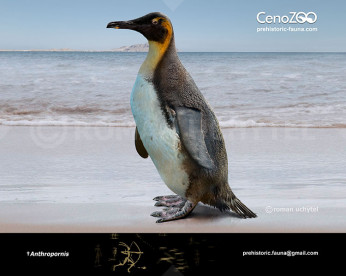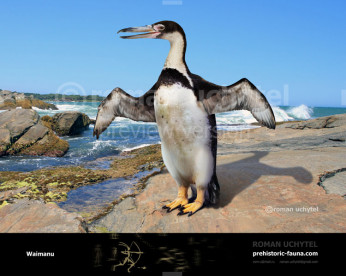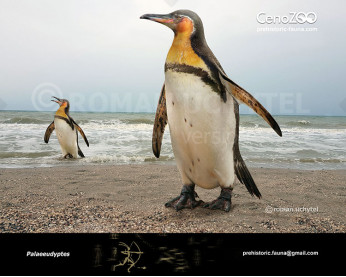Kumimanu
100001100001
Kumimanu (†K. biceae Mayr, Scofield, De Pietri & Tennyson, 2017, †K. fordycei Ksepka et al., 2023)
Class: Aves
Order: Sphenisciformes
Dimensions: Height - 160 - 177 сm, weight - 90 - 150 kg
Temporal range: lived during the Paleocene (New Zealand, 60 - 56 million years ago)
In 2017 an article on one of the largest and oldest species of the order Sphenisciformes.The order Sphenisciformes refers to all living and extinct penguin species. The new species discovered at Hampden Beach in the Otago region of New Zealand. This giant penguin is named Kumimanu biceae, of which the genus name translates from Māori as "monster bird", while the specific name honours the nickname of the mother one of the authors. Total length from tip of the beak and tail is approximately 1.60 - 1.77 meters, and weighing over 91 kg, being thus the second largest penguin thus far known. This is a particularly significant discovery because the fossil is fifty-five million years old — meaning it lived in the Paleocene era — which is many million years older than all other previously found remains of penguins which reached 'giant' sizes, and thus the third or fourth oldest penguin known.
Kumimanu fordycei is the one of largest known living or extinct penguin species, with an estimated weight of 150 kg. Some articles mention a height of about 1.6 m, although the nearly complete skeletons are absent. The species name honours palaeontologist Ewan Fordyc.
Kumimanu biceae lived in New Zealand, which was subtropical during much of the Paleocene era. There were many organisms in these waters including sea turtles and various fishes. K. biceae were likely similar to modern-day penguins in the way they lived. However, these “monster birds” were likely able to consume larger prey due to their size.
Payment
You may use multiple payment methods to buy image such as credit cards, PayPal and bank transfer.
Kumimanu (†K. biceae Mayr, Scofield, De Pietri & Tennyson, 2017, †K. fordycei Ksepka et al., 2023)
Class: Aves
Order: Sphenisciformes
Dimensions: Height - 160 - 177 сm, weight - 90 - 150 kg
Temporal range: lived during the Paleocene (New Zealand, 60 - 56 million years ago)
In 2017 an article on one of the largest and oldest species of the order Sphenisciformes.The order Sphenisciformes refers to all living and extinct penguin species. The new species discovered at Hampden Beach in the Otago region of New Zealand. This giant penguin is named Kumimanu biceae, of which the genus name translates from Māori as "monster bird", while the specific name honours the nickname of the mother one of the authors. Total length from tip of the beak and tail is approximately 1.60 - 1.77 meters, and weighing over 91 kg, being thus the second largest penguin thus far known. This is a particularly significant discovery because the fossil is fifty-five million years old — meaning it lived in the Paleocene era — which is many million years older than all other previously found remains of penguins which reached 'giant' sizes, and thus the third or fourth oldest penguin known.
Kumimanu fordycei is the one of largest known living or extinct penguin species, with an estimated weight of 150 kg. Some articles mention a height of about 1.6 m, although the nearly complete skeletons are absent. The species name honours palaeontologist Ewan Fordyc.
Kumimanu biceae lived in New Zealand, which was subtropical during much of the Paleocene era. There were many organisms in these waters including sea turtles and various fishes. K. biceae were likely similar to modern-day penguins in the way they lived. However, these “monster birds” were likely able to consume larger prey due to their size.

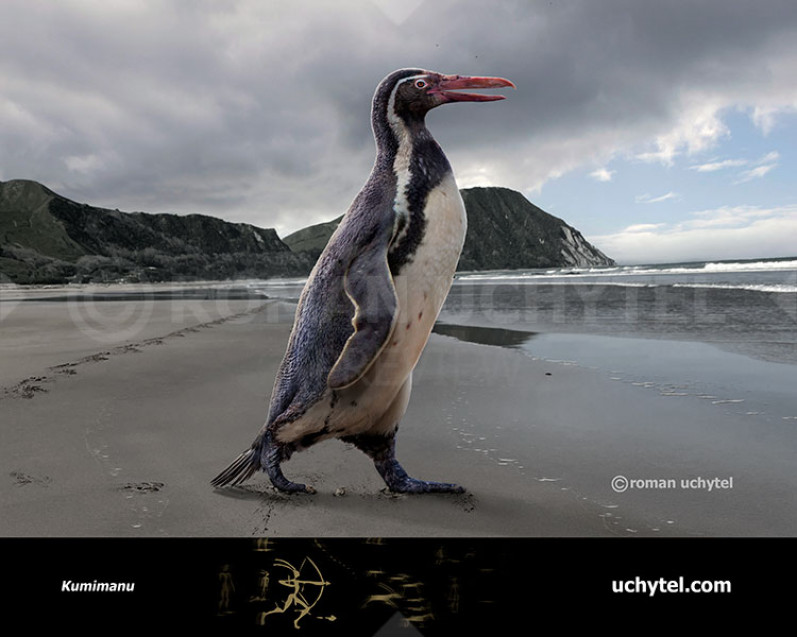
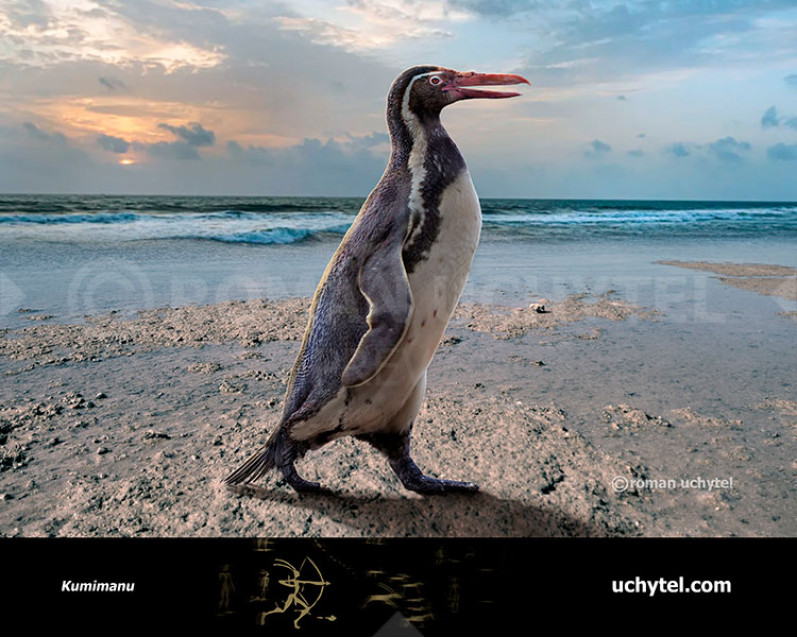
-797x638.jpg)
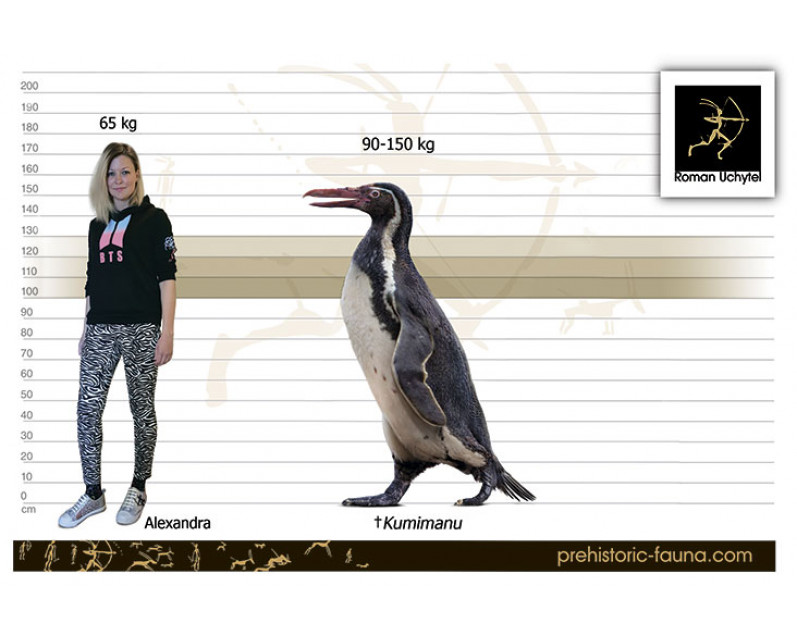


-70x56.jpg)

